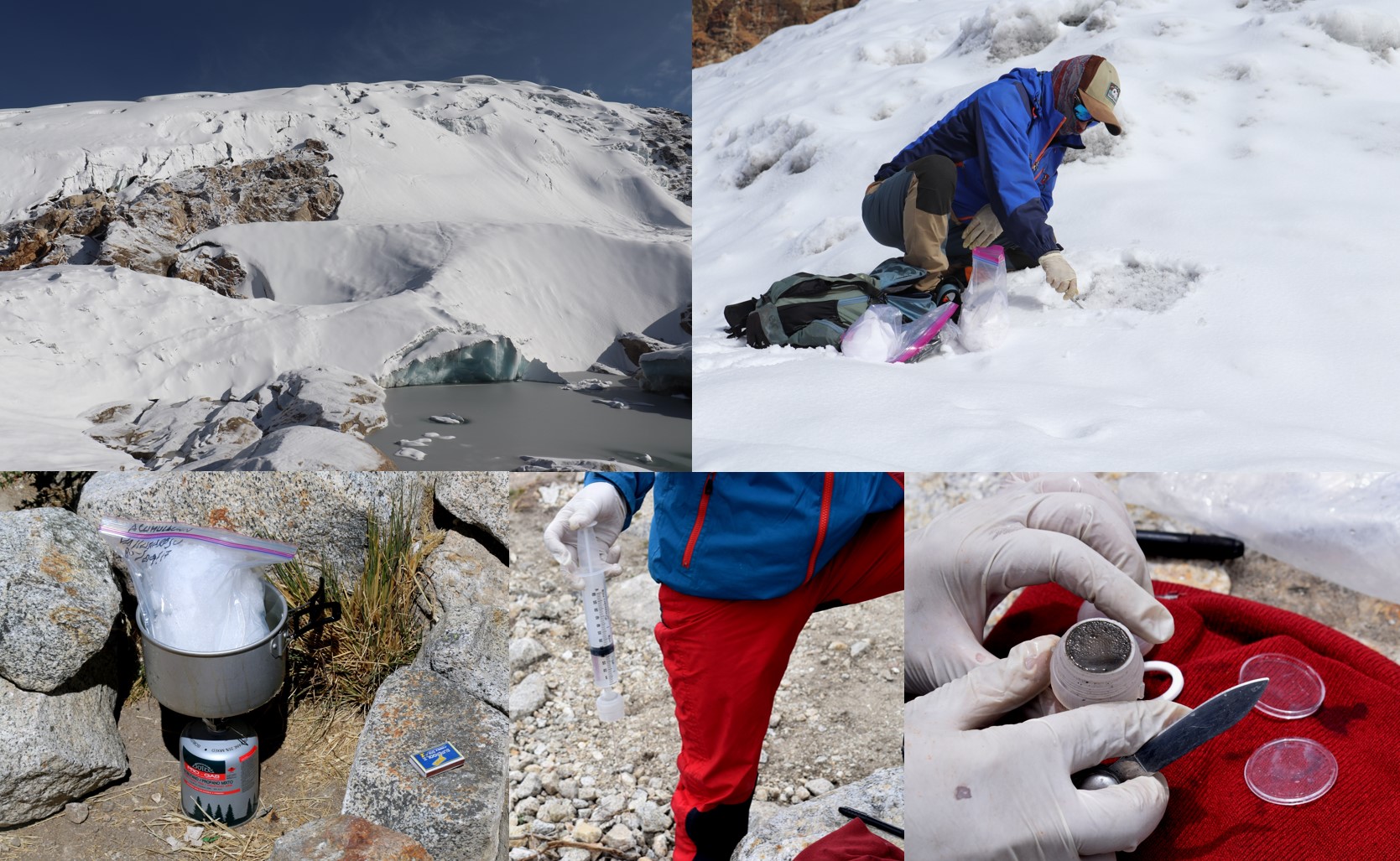The role of Black Carbon (BC) as a contributor to glacial retreat is of particular interest to the scientific community and decision makers, due to its impact on snow albedo and glacier melt. In this study, a thermal-optical instrument (LAHM) was used to measure effective Black Carbon (eBC) in a series of surface snow samples collected from the Vallunaraju glacier, Cordillera Blanca, between April 2019 and May 2020. The time series obtained indicates a marked seasonal variability of eBC with maximum concentrations during the dry season and dramatic decrease during the wet season. The concentrations detected ranged between a minimum of 3.73 ng/g and 4.23 ng/g during the wet season and a maximum of 214.13 ng/g and 181.60 ng/g during the dry season, in the accumulation and ablation zone. Using SNICAR model, the reduction of albedo was estimated at 6.36% and 6.60% during the dry season and 0.68% and 0.95% during the wet season, which represents an average radiative forcing of 4.52 ± 1.84 W/m2 and 4.69 ± 1.59 W/m2 in the accumulation zone, and 0.49 ± 0.27 W/m2 and 0.68 ± 0.43 W/m2 in the ablation zone. The melting of snow due to the eBC translates into 80.18 ± 37.30 kg/m2 and 83.16 ± 32.75 kg/m2 during the dry season, and 7.91 ± 4.29 kg/m2 and 10.85 ± 6.62 kg/m2 during the wet season, in the accumulation and ablation zones, respectively. Finally, the HYSPLIT trajectory assessment shows that aerosols predominate in the Amazon rainforest, especially when forest fires are most abundant according to VIIRS images.

